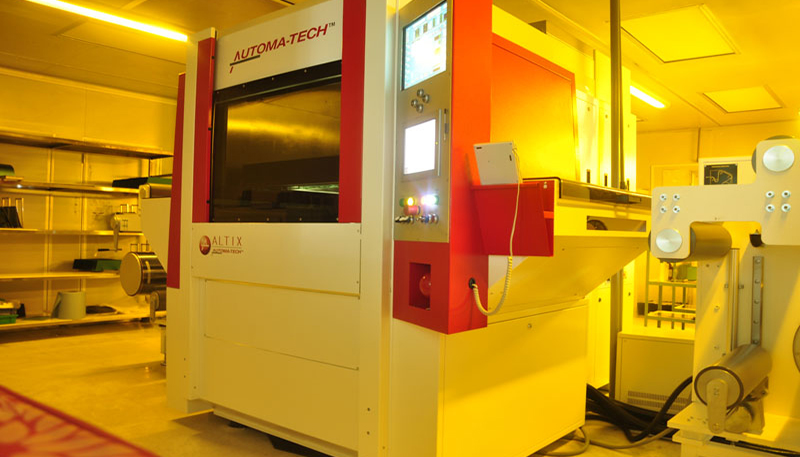
Stainless steel etching is a technique used to create designs, text, or images on the surface of stainless steel by removing a small amount of material. This process is commonly used in applications such as decorative artwork, labeling, and signage, as well as in industrial settings where precise markings are required. Below, I'll provide a comprehensive overview of the methods, steps, and safety considerations for etching stainless steel.
Stainless steel is known for its durability, corrosion resistance, and shiny appearance, making it a popular choice for both functional and decorative items. However, its resistance to corrosion and staining also makes it harder to etch compared to other metals. Etching stainless steel involves the controlled removal of its surface layer to reveal designs or text. The primary methods for etching include chemical etching, electrochemical etching, and laser etching.
Chemical etching involves using an acid or another corrosive substance to eat away at the steel’s surface in the desired pattern. Here’s how the process generally works:
Etching Acid: Ferric chloride or hydrochloric acid is commonly used.
Resist: A resist (usually wax, tape, or specialized film) protects the areas of the steel you do not want etched.
Safety Gear: Gloves, eye protection, and a well-ventilated area are essential.
Etching Container: A non-metallic container to hold the acid.
Clean the Steel: Clean the stainless steel thoroughly to remove any oils, dust, or fingerprints. A clean surface ensures the resist adheres well.
Apply the Resist: Apply a resist to the areas of the steel that you do not want to be etched. You can use masking tape, vinyl, or wax for simpler designs or photoresist film for more complex, intricate designs.
Submerge in Acid: Place the stainless steel piece in the etching solution, ensuring the acid only touches the areas to be etched.
Monitor the Process: The duration varies depending on the strength of the acid and the depth of etching you desire. Check the etching periodically.
Rinse and Clean: Once the etching is complete, rinse the piece thoroughly in water to neutralize the acid, then remove the resist and dry.
Note: Chemical etching with strong acids can be dangerous. It’s crucial to follow safety protocols and work in a ventilated area, as some acids produce harmful fumes.
Electrochemical etching uses an electrolyte solution and electrical current to remove material selectively from the surface of the stainless steel. This method is often more precise and safer than chemical etching and is popular in industrial applications.
Electrolyte Solution: A solution specifically designed for electrochemical etching.
Stencil: A stencil that will allow current to flow only to the areas you want etched.
Power Source: A DC power source (often low-voltage) is required.
Conductive Pad: A pad soaked in electrolyte solution to conduct electricity through the stencil.
Prepare the Surface: Clean the surface as with chemical etching.
Place the Stencil: Position the stencil over the area to be etched, ensuring a good seal.
Connect to Power: Attach the power source’s positive and negative leads to the conductive pad and stainless steel.
Apply the Conductive Pad: Gently press the conductive pad onto the stencil, allowing current to flow. The electrical current oxidizes and removes a small layer of metal in the exposed areas.
Rinse and Clean: Once complete, remove the stencil and rinse thoroughly.
Electrochemical etching is precise and doesn’t involve the hazardous chemicals used in traditional acid etching, making it a safer alternative.
Laser etching uses a high-powered laser to remove material or alter the surface of stainless steel to create a visible contrast. This method is highly precise and is widely used for industrial parts, labels, and decorative work.
Laser etching requires specialized equipment. A focused laser beam interacts with the surface of the stainless steel, vaporizing a small amount of material in a controlled pattern. Laser etching offers unparalleled detail and is ideal for intricate designs, but the setup is expensive and generally not suited for DIY projects without professional equipment.
Protective Gear: Always wear gloves, safety glasses, and protective clothing.
Ventilation: Work in a well-ventilated area, especially with chemicals, to avoid inhaling fumes.
Storage and Disposal: Store chemicals safely and dispose of them according to local regulations.
Etching stainless steel is achievable through chemical, electrochemical, and laser methods. Each has its own advantages, with chemical etching being accessible but potentially hazardous, electrochemical etching offering more control and safety, and laser etching providing excellent precision but requiring specialized equipment. Proper safety practices and material handling are essential, especially when dealing with acids and electrical equipment.
Let me know if you need more details about a specific etching method, or if you’re looking for guidance on a project!
Contact: andy_Lai
Phone: 18938693450
E-mail: yw9@zldsmt.com
Add: Building A3, Huafa Industrial Park, Fuyong Town, Fuyuan Road, Fuyong Town, Baoan District, Shenzhen,China